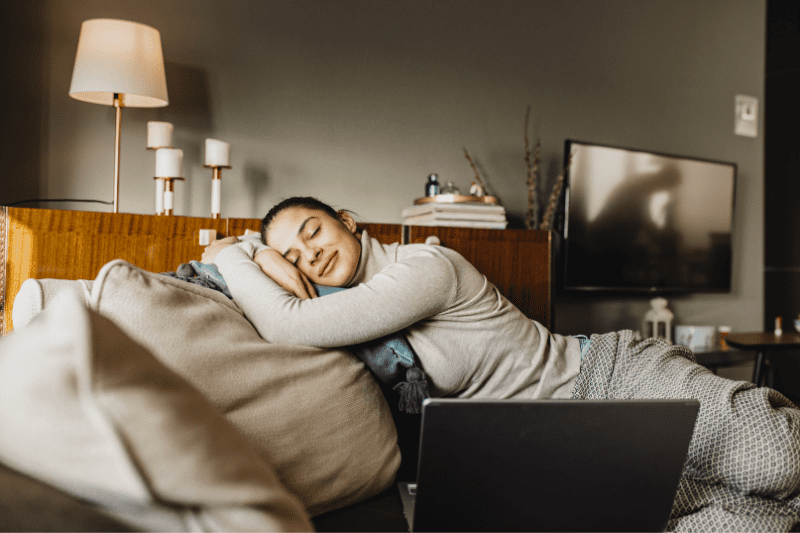Learn how to power nap, you can refresh and re-energize while you work on improving total sleep quantity and quality. We all know there aren’t enough hours in the day, and getting 8-10 hours of sleep every night is just a dream for most of us. Luckily, a nap may be just the ticket to help get you past the afternoon energy slump.
Why should I learn how to power nap?
The National Sleep Foundation reports that nearly half of American survey respondents said recently that they get tired many days of the week. That’s probably because a little over a third of adults get less than seven hours of sleep each night.
What can we do to address that building sleep deficit?
We can learn how to power nap.
Short naps during the day can’t make up for all the sleep we’re missing, but they can be a short-term solution to midday fatigue so we can gain a second wind to power through the day. Research tells us that naps can help no matter what kind of nighttime sleep habits you have, and the positive effects on brainpower and mindset are substantial. A short nap can help you be more creative and positive as the day goes on.
How to power nap
Use these seven helpful tips to teach yourself how to power nap, but remember that daily sleep hygiene is even more important in the long term that what a quick nap can offer. Fix your sleep habits, and you’ll still benefit from power naps when you need them.
- Keep it short. Power naps that zap fatigue are best kept to 20 minutes or less. Longer naps can have the opposite effect and can make it harder to go to sleep at night.
- Choose your nap time wisely. Humans run on daylight-dependent circadian rhythms, and the most effective nap time is around 2-3 p.m. Your ideal time may be different, so find your sweet spot with some test naps at different times when you’re feeling tired.
- Designate a nap spot. Your bed should be reserved for a restful, full night’s sleep. Pick another comfy spot that will make it easier to limit your nap to 20 minutes or less.
- Make your nap spot in a quiet place. Seek out a dark, quiet nook or room without any outside distractions. Put on soothing white noise or music to drown out the world so you can relax.
- Think of it as quiet time. You don’t have to fully fall asleep to benefit from a quiet brain break. Close your eyes and focus on breathing to let your mind and creativity reset.
- Quiet potential bladder disruptions. No one can relax with an insistent bladder, so empty it before you lie down.
- Set yourself up for success. Minimize outside distractions by scheduling a “meeting” during your nap time, silencing your phone, and setting a timer so you’re not worried about oversleeping.
Assign yourself naps and work on sleep hygiene
It’s a tough assignment, but think of naps and improving your nighttime sleep habits as investments in your total health. You’ll reap the emotional, physical, and mental benefits of restorative sleep. It’s an essential part of a healthy lifestyle!


